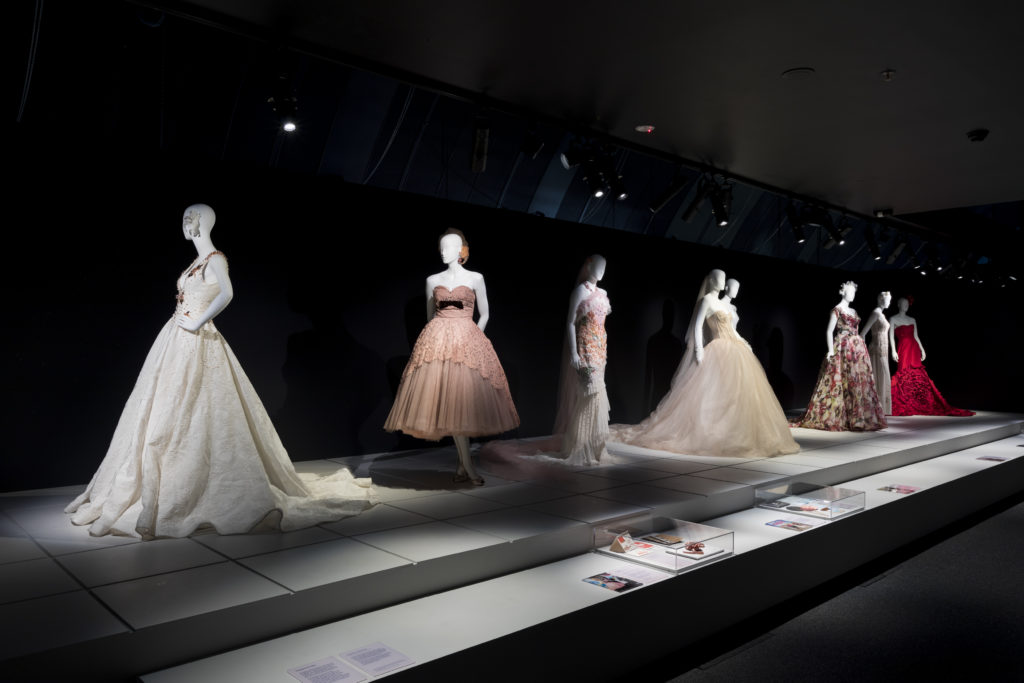
Marriage has been practiced in myriad forms across time and communities. It has no universal model and is in a frequent state of flux as it adjusts and responds to the changing political, economic and social milieu. For most of its history marriage was viewed as a crucial political and economic alliance – a means to enhance a family’s wealth and status. By the late 18th century new ideas about the role of marriage gave rise to today’s romantic ideal of marrying for love. Initially this notion caused outrage with some sceptics questioning why you would base something as important as marriage on as transient a passion as love!
The Museum’s collection of Australian provenanced wedding dress spans almost two centuries from the beginning of European colonisation to the present and is a fascinating place to explore the way Australian wedding traditions, laws and styles have been shaped by diverse social, technological, economic and political shifts. Over sixty outfits from this collection alongside loans reflecting the diversity of contemporary wedding style are currently on display at the Powerhouse Museum in Love Is… Australian Wedding Fashion.
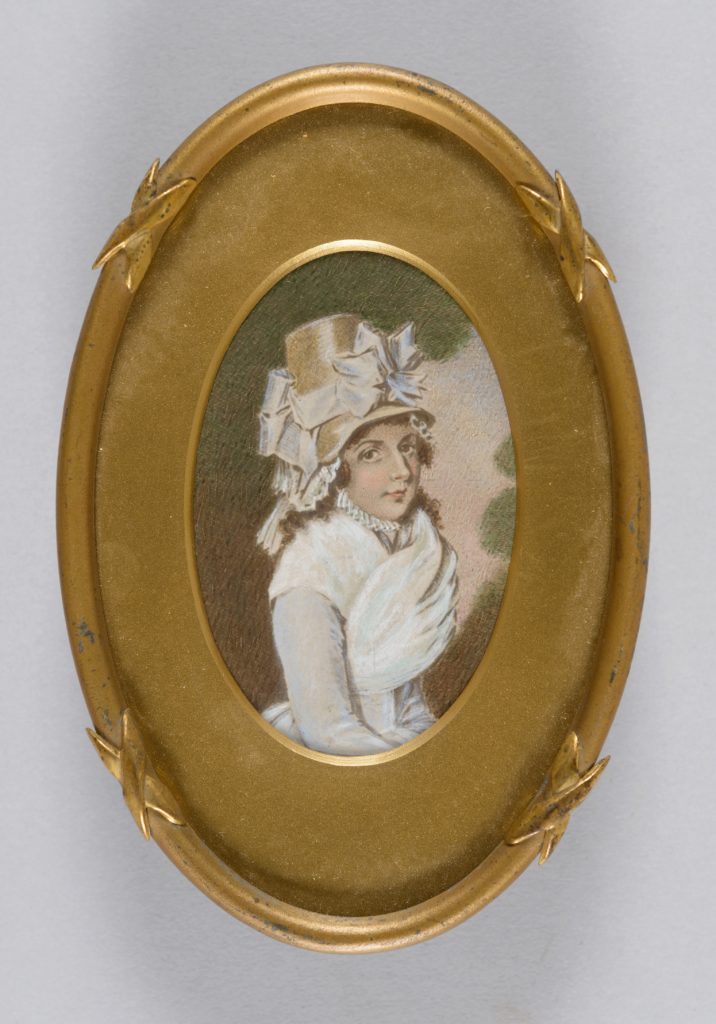
One of the exhibition highlights is Australia’s earliest surviving provenanced wedding dress worn by Ann Marsden in 1822. The Marsden family were among the small number of free settlers who arrived in the first decade of the penal colony. Soon after his appointment as assistant chaplain to the colony Samuel Marsden wrote and proposed to Elizabeth Fristan explaining that God was calling him to carry the gospel to distant lands and asking ‘will you go along with me? Are you willing to take up your cross and share my Pleasures and my Pains?’* Despite the frequent loss of ships at sea and discouraging reports from the colony of food shortages and debauched behaviour, Elizabeth decided to take up the challenge. This portrait depicts Elizabeth Fristan on her wedding day in 1793.
The couple arrived in Port Jackson in 1794 after eight difficult months on the merchant ship William during which Elizabeth gave birth to their first child, Ann, in a wild storm off the coast of Tasmania.
Elizabeth must have brought her wedding dress with her, perhaps as was common at the time, intending to rework the precious pale green silk damask textile into another style. However, it wasn’t until over 20 years later that, according to family history the dress was refashioned into her daughter Ann’s wedding dress and worn for her marriage to the Reverend Thomas Hassall in 1822.
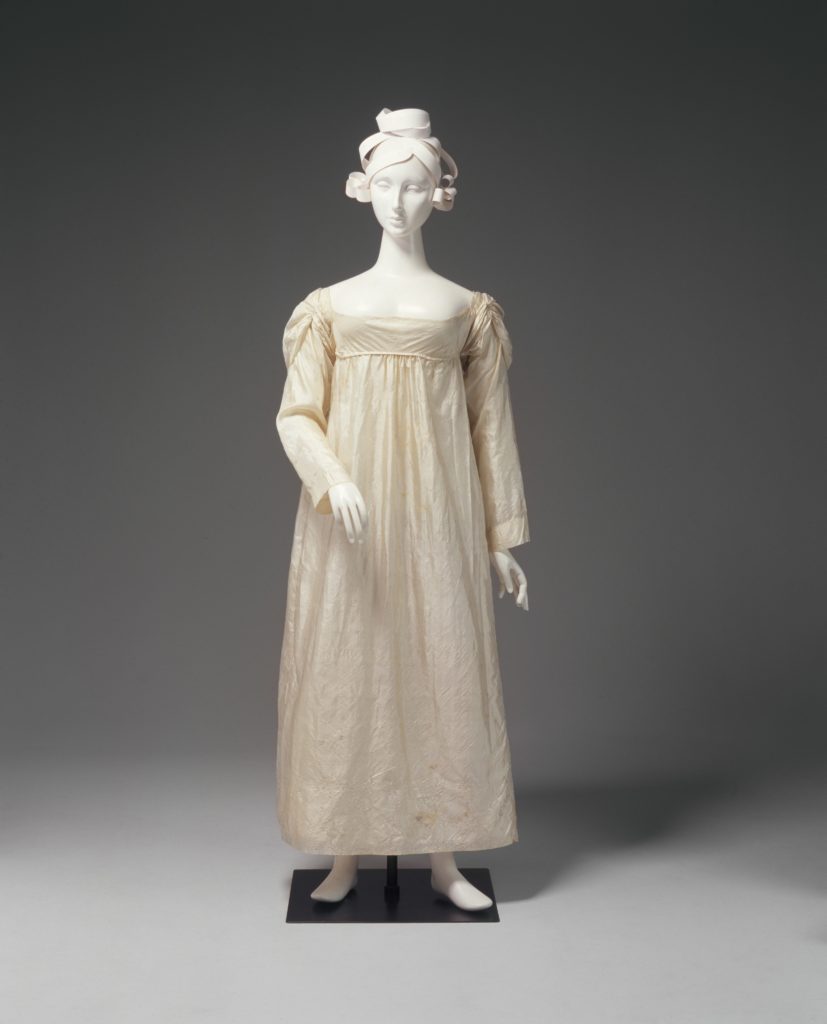
White wedding dresses had been popular with wealthy families in the 1700s however it was Queen Victoria’s romantic gesture of wearing a white satin and lace dress for her marriage instead of the customary crimson velvet robe of state that helped cement the popularity of the white wedding dress in the mid-1800s. While the colony’s brides may have aspired to a white wedding, it was an impractical and expensive choice and women more frequently wore their best dress. When Jane Churchill married John Frazer at Taree Methodist Church in 1881 she chose this brown day dress which shows much evidence of subsequent wear.

Even as living standards rose, fuelled by gold and wool exports, those who could afford a more lavish white wedding dress expected to wear it again on other occasions. The dress pictured below is designed with two bodice options, so it could later be worn for evening wear. Many of the 19th and early 20th century wedding dresses in the collection were designed to be adaptable with removable trains, day and evening bodices and two styles of sleeve.
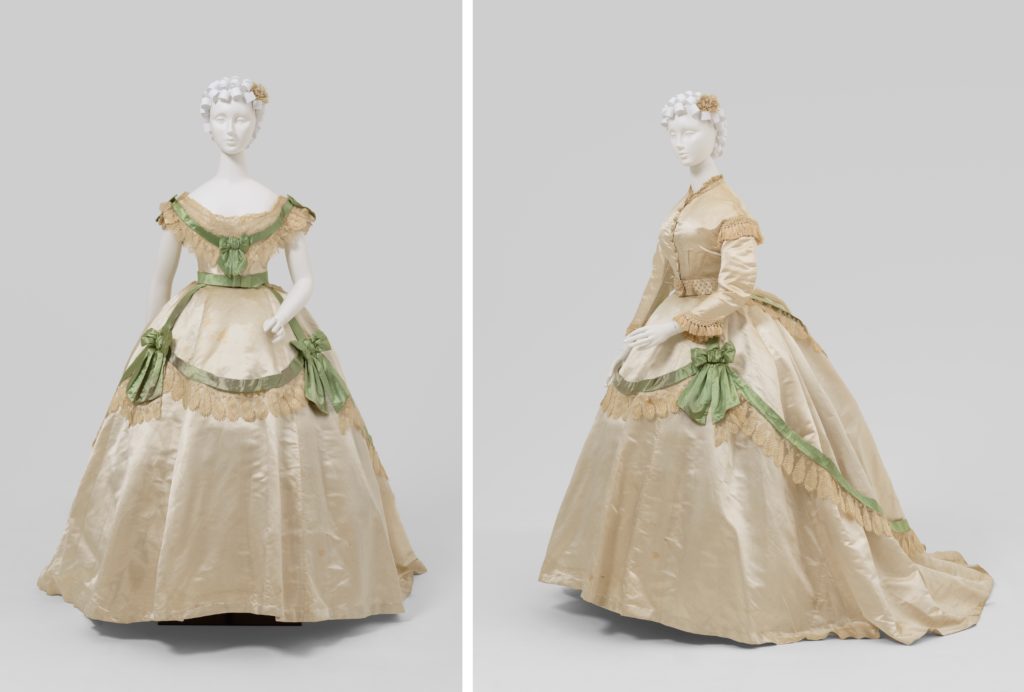
Marriage is a social institution regulated by state laws that determine who Australians can and cannot marry. The exhibition includes the wedding suits of one of Australia’s high-profile entertainment couples Anthony Callea and Tim Campbell who travelled to New Zealand, where same sex marriage was recognised in 2013, to make their wedding vows in 2014. It was only recently, on 7 December 2017, that Australia became the 26th nation in the world to recognise same-sex marriage and the Marriage Act 1961 was amended to allow two people the right to marry irrespective of their sex.
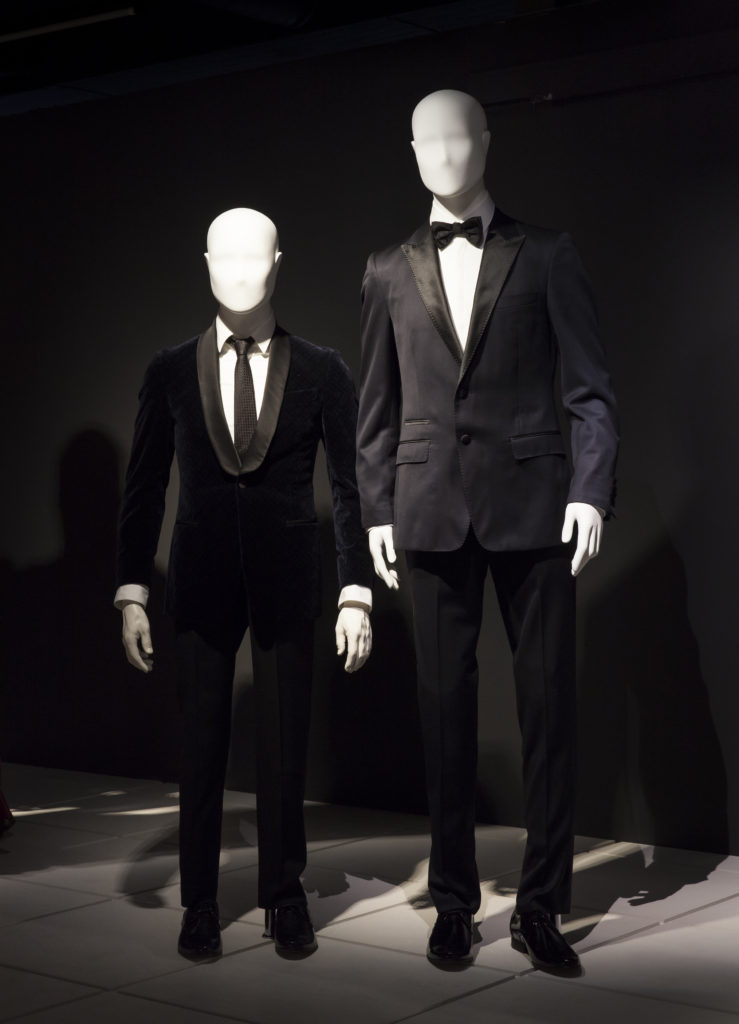
The impact of marriage laws on indigenous Australians has also been explored in a previous blog post. Another wedding outfit in the collection relates to a reform in marriage law that occurred in the colony in the late 1800s. The dress was worn by Mary Cameron Murray on her marriage in 1883 to architect, businessman and politician Varney Parkes, son of NSW Premier and ‘Father of Federation’ Sir Henry Parkes. Mary died from tuberculosis five months later and shortly afterwards Varney proposed to her older sister Isabella. This marriage was legitimised by the change a few years earlier to a law prohibiting marriage to a deceased wife’s sister. The origins of the prohibition lie in the Old Testament and the notion that in-laws become blood relatives making a man’s marriage to his deceased wife’s sister incest. This was passed into law in the British Empire in 1835 and while the ban was only lifted in Britain in 1907 the Australian colonies, with their smaller pool of eligible women, fought and won the right to have these marriages legalised much earlier. You can read more about the fascinating history of this law here.

There was a dramatic change in wedding fashions in the 1900s. Suffragette campaigns won women the right to vote and World War I created diverse employment opportunities and greater freedoms for women. The cumbersome, heavily corseted curves of Victorian and Edwardian fashion were replaced by simple, practical, loose-fitting styles and shortened skirts more suited to independent and active lifestyles.
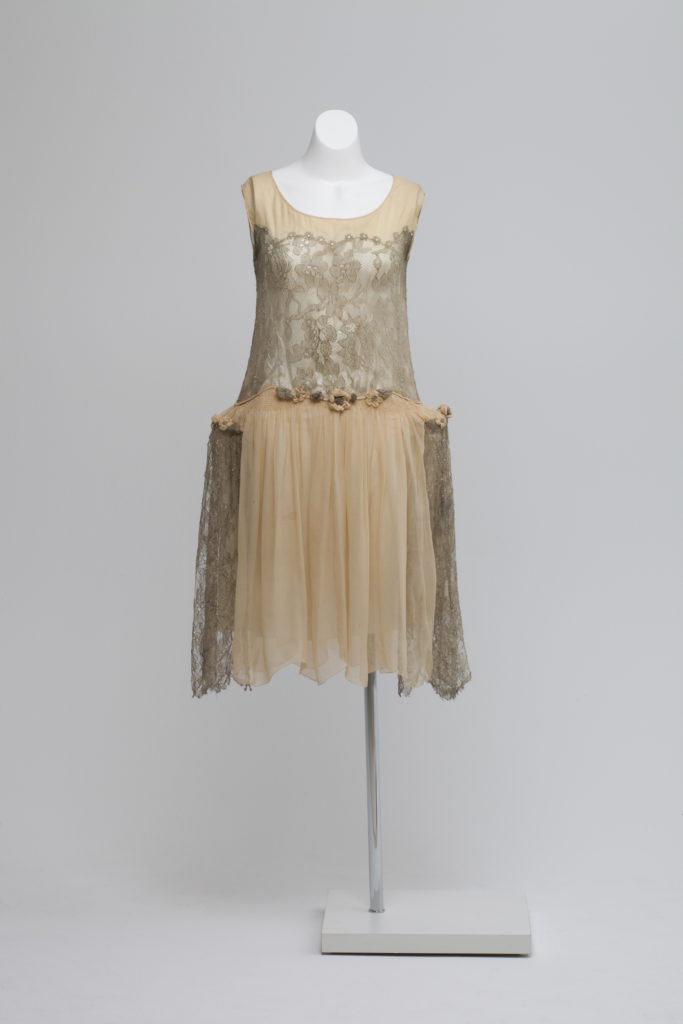
The deprivations of the 1930s Great Depression and WW11 had by the 1950s brought a deep desire for stability. Women were demobilised from the workforce and the call to ‘populate or perish’ aimed at establishing women’s place in the home. Couples started to marry at an earlier age and the marriage boom of the 1950s was accompanied by a romantic ideal of the fulfilled housewife and mother supported by a male breadwinner.
With its fitted bodice and full length, four-layer voluminous skirt Diana Fisher’s wedding dress is a beautiful example of the silhouette popular with 1950s brides, reflecting the impact Christian Dior’s ‘New Look’ had on women’s fashion after the privations imposed on dress by rationing and government restrictions during World War II. Diana’s dress is made from nylon, the new synthetic ‘wonder fibre’ perfect for creating the volume required in full skirts without the weight. At the time Diana was working as a BOAC air hostess and found an illustration of this dress in an American Wedding Magazine where the fabric was described as ‘air-borne nylon tulle’. When one of her flights landed in New York she raced off to Bonwit Teller, purchased the dress and found she was able to cram the voluminous gown into her bag.
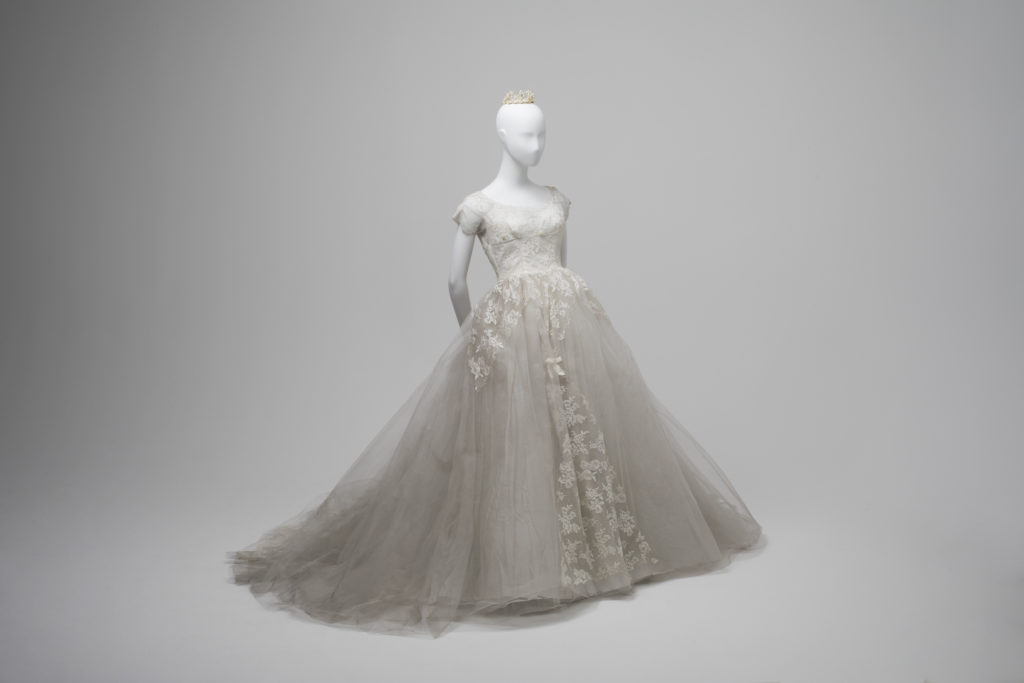
The ideological upheavals of the 1960s and 70s encouraged women and men to challenge the limitations imposed on them by marriage while the introduction of the contraceptive pill in 1961 allowed women to take control of their fertility, improving their ability to undertake formal education and build careers. The impact of these changes can be seen in several wedding outfits in the collection. Reflecting the move away from Church weddings and the rise of civil ceremonies model Irene Combe and DJ Ward ‘Pally’ Austin chose to elope, marrying at Sydney Registry Office in 1968. Irene wore a cream wool mini dress purchased from Katies. In 1979 Alexandra Joel married Philip Mason in her family’s garden wearing a cream wool skirt suit she continued to wear to work.
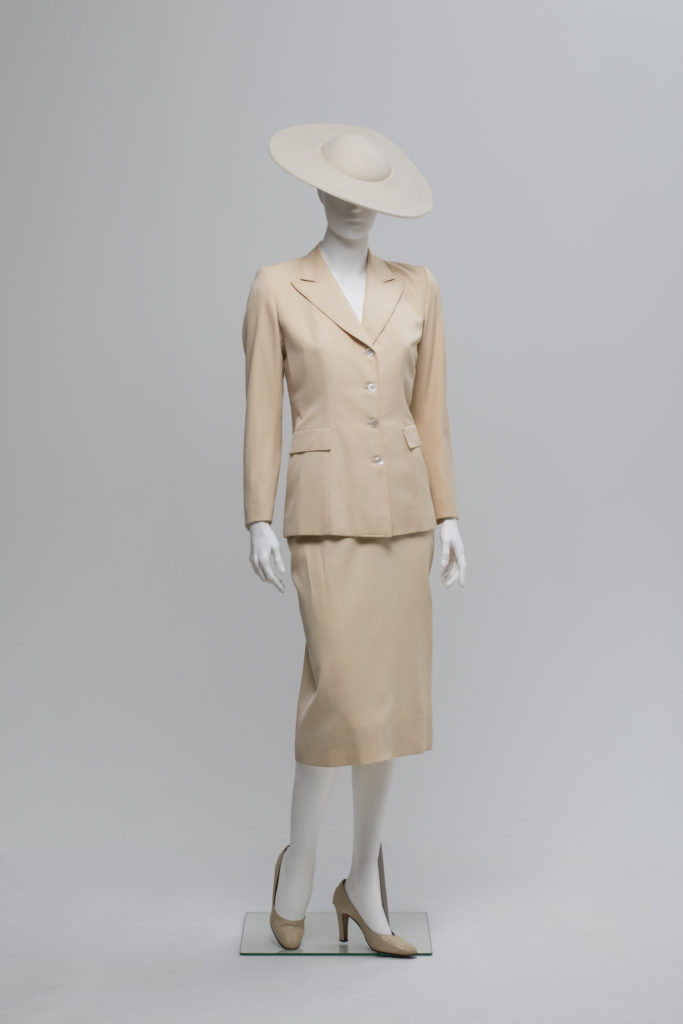
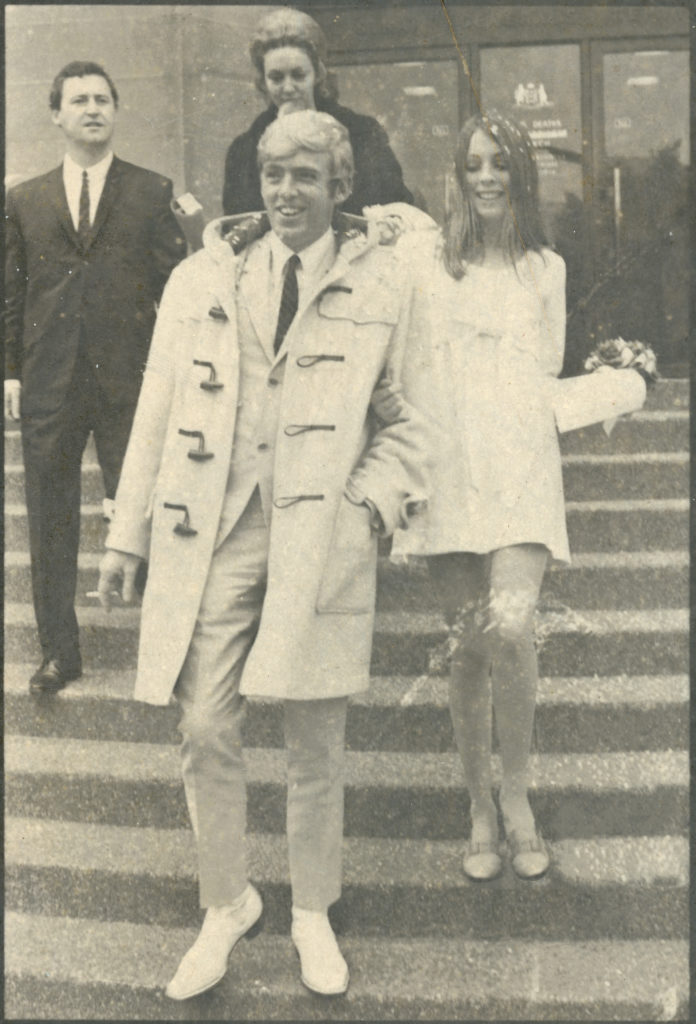
Today couples are free to follow tradition or create their own memorable and unique wedding, imprinting their personality and identity on all aspects of the event. This is reflected in the diversity of bridal styles and experiences, from designer dresses to fantasy themes, vintage style, DIY and a revival of cultural traditions. Even so, the white wedding dress retains its allure providing a rare opportunity to dress up, celebrate romantic love and undergo a fairy-tale transformation for a day.
Designer and TV presenter Claudia Chan Shaw designed her ‘My Fair Lady’ inspired wedding dress jointly with her mother, knitwear designer Vivian Chan Shaw. The dress was constructed using Vivian’s signature hand-loomed knit, made on a flat-bed knitting machine. Vivian spent months adding the black beading and lace appliqué. Claudia recalled that her mother would look up from her work, shake her head and say, ‘Never again, Claudia, never again.’
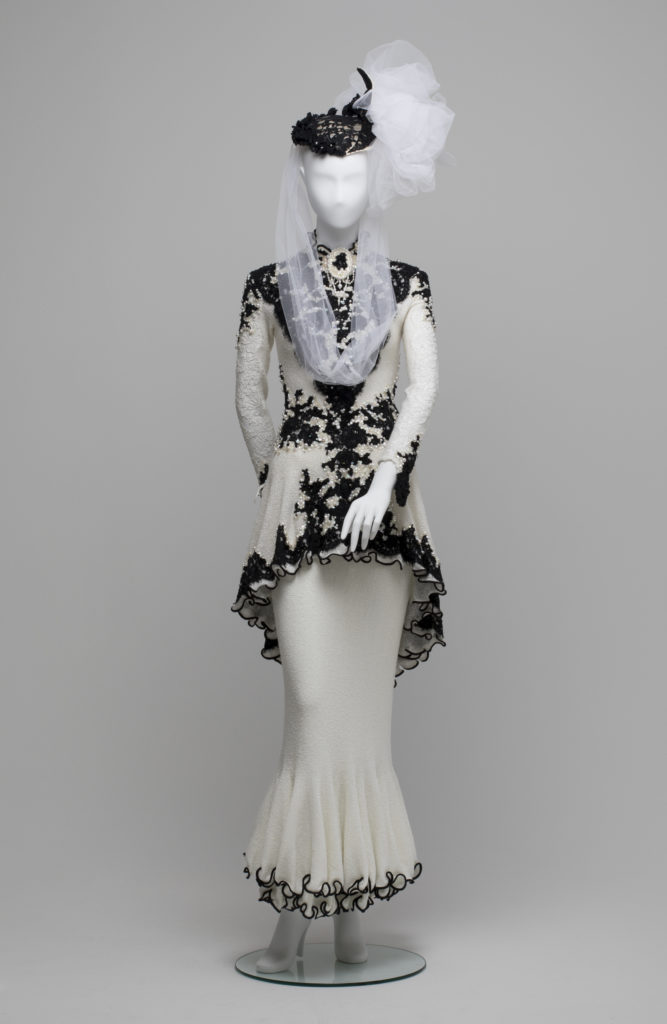
*Samuel Marsden letter to Miss Fristan, 14 March 1793, Hassall correspondence, Mitchell Library, A1677-3. Vol 3, pp1-4.
Written by Glynis Jones, Curator, February 2018.
